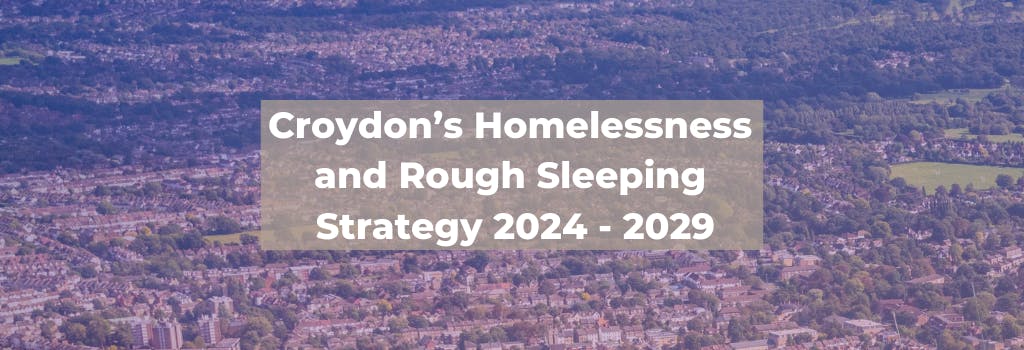Key data used to help develop our priorities
- Croydon is London’s most populated borough, with approximately 390,800 residents. With a projected growth from 2022 – 2041 of 7.9%. Croydon’s age profile is therefore expected to become younger.
- Figures for 2021/2022 show that more than half (55%) of homeless people in Croydon are aged 25-44 years. 21% are aged between 16 and 24 years and 20% are aged 45-64 years. Only 3% of people aged 65 years and over are homeless.
- Government statistics in terms of the ethnic profile of those who were owed a prevention or relief duty in the final quarter of 2022 showed the following.
- In Croydon 15.8% of residents were classified as disabled under the Equalities Act against a London average of 13.3%.
- When those with long-term physical or mental health needs are added, this amounts to 19.6% of Croydon’s and 18.5% of London’s population.
- Croydon also has an ageing population, since 2011 the borough has seen a 19.6% growth in the number of residents aged 65 years and over and is now the second highest in London.
- Croydon has the highest number of households in London, 152,900.
- The table below outlines the tenures that make up the 152,900 households.
- Census 2021 data shows us that most households in LB Croydon are one-person or two-person households (57.7% of households). Approximately 18.2% of households in the borough are 3-person households, and 24.1% of households are 4+ persons.
- As of January 2023, there were approximately 6,979 households on Croydon Council’s Housing Register which represents an increase of 5.9% since January 2022.
- The average wait time for a Croydon Council property between 2016 and 2021 was five years and 11 months. Most households on the housing register are waiting for one-bedroom and two-bedroom properties.
- In Croydon renting in the private sector accounts for up to 31% of all tenure types -approximately 158,000 dwellings
- In 2022, 284 Residents were subject to losing their home through “no fault evictions”
- Rents in the sector are increasing with Croydon’s average annual increase standing at 9.7% compared with the London average of 12% making it a target for other boroughs seeking to procure cheaper temporary accommodation in the area.
- Our research shows nearly a quarter of properties in the private sector had at least one serious hazard and in addition reported that 27% in this category have an E, F or G rating, the lowest ratings within the Energy Performance Certificate system.
- Between 2015 and 2019, 15,746 investigations have been conducted regarding nuisance in private rented sector properties.
- Between 2019 and 2023, 276 units across 13 developments were provided through the Housing Revenue Account and the General Fund with rents set at London Affordable levels since 2021.
- On average, available council accommodation annually is around 400 dwellings a year-50% one bed,35% two bed and the remainder three or four bedroom.
- In Croydon, as of December 31 2022, there were 1935 households in temporary accommodation. Of these households, 1359 had children living with them, with a total of 2589 children in temporary accommodation.
- 28% owed a rehousing duty were asked to leave by family or friends against 36% London-wide.
- The table below shows the number of households in temporary accommodation by household composition (31 December 2022).

- Croydon has one of the highest number of residents (143 applicants) in bed and breakfast amongst those benchmarked.
- Croydon records the highest numbers for rough sleeping amongst outer London Boroughs but has a good record in making sure that people do not have a “second night out”.
- In Q4 of 2022-23, 50 of the 83 new rough sleepers achieved no second night out in the south-west London region. Of the 83 recorded, 50 of those achieving no second night out were from Croydon.
- 15% of rough sleepers refuse offers of assistance.
- The rise in those presenting for reasons of mental health- this is up from 56,980 in 2018/19 to 72,960 in 2021/22.
- The rise in domestic abuse claimants from 23,920 in 2018/19 to 32,600 in 2021/22.
- Increases in drug and alcohol dependency from 25,260 in 2018/19 to 30,540 in 2021/22.
Croydon's demographic context

Housing supply

Private sector housing
New housing
Temporary housing and bed and breakfast
Rough sleeping
Future projections
When considering the need for targeted support for the causes of homelessness the following national figures are considerations
These upward figures may have been affected by the Covid period but further increases of 10%-15% could be likely over the period of the next housing strategy.

